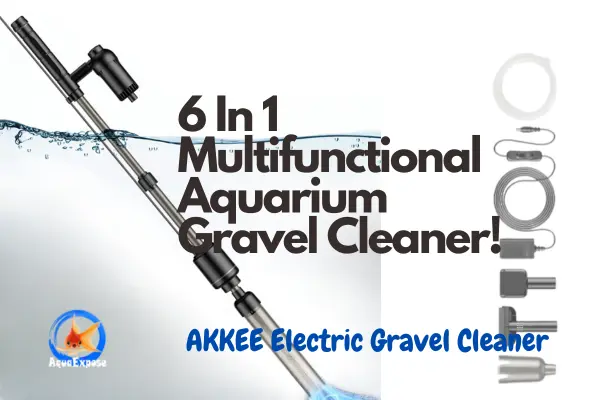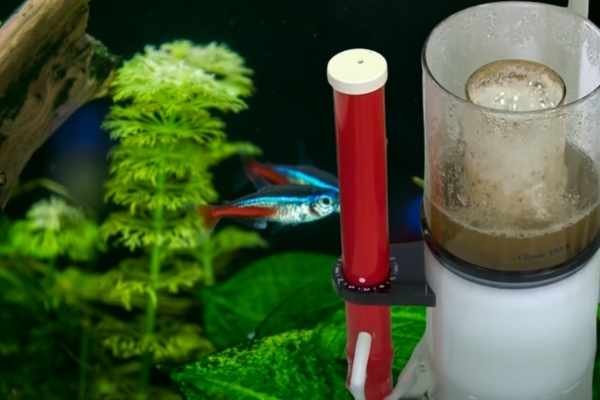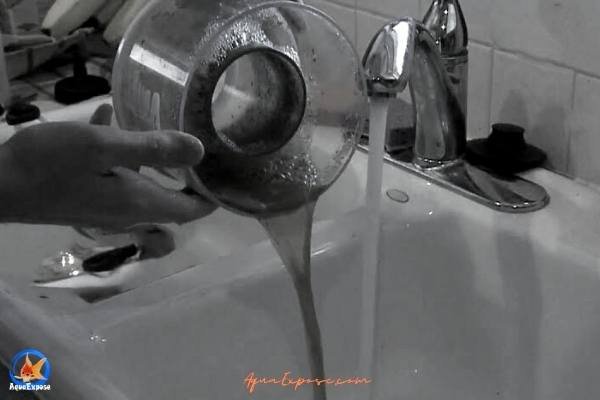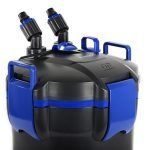Types Of Protein Skimmers: Which Work Best For You?

Protein skimmers remove microscopic particles from the water column. They work by creating a whirlpool effect that gathers tiny bubbles and carries them up to the chamber’s top. As the bubbles rise, they collect small organic particles from the water column. This process is called “foaming.” Foam is created by oxygen in the air mixing with salt water as it breaks through the water’s surface. Here we’ll discuss the different types of protein skimmers, how they work and which one you should use.
There are many types of protein skimmers, most notably bubble-matrix, venturi, and wet-dry. The most common types of protein skimmers use an air pump that forces air into the water through a porous sponge or screen. This causes bubbles that break on top of the water’s surface, which attracts contaminants. Some skimmers use a venturi tube to draw in water; the pressure causes bubbles to form when air is expelled from one side of the tube to another.
Many saltwater aquarium hobbyists swear by protein skimmers as one of the primary ways to maintain a sparkling clean, and healthy-looking tank. Protein skimmers work by pumping water from the top of your tank and breaking it down into fine bits of air bubbles and water droplets, which are then collected at the bottom of the unit.
Many people use their units on an automatic timer and set recommended times to avoid running continuously for 24 hours or longer.
What do protein skimmers do?
A saltwater aquarium can be a beautiful addition to any home, but maintaining it can be challenging. The fish produce ammonia due to their waste that needs to be filtered from the water. One way to help filter the water is using a protein skimmer.
A protein skimmer is a device that removes organic matter from saltwater aquariums by extracting the dissolved organic molecules from the water and pumping them into a collection cup. Protein skimmers are divided into two types: mechanical and chemical. Mechanical protein skimmers rely on a pump to push water out of a tube, creating bubbles. The bubbles break up the organic molecules in the seawater, making them more accessible for the protein skimmer to collect.
It removes organic molecules from the water by drawing them into a hidden compartment where they are broken down and removed from the tank. They also keep algae levels under control through this process since proteins draw nutrients away much quicker than dissolved oxygen; thus, eliminating nitrogen compounds (protein) will free more carbon dioxide ions needed within an aquatic system!
Types of protein skimmers:
Saltwater tanks are home to a variety of marine life, including fish. The types of protein skimmers are different depending on the aquarium you have. Protein skimmers are designed to remove organic compounds from the water column by creating bubbles that attach to the compounds and float them to the surface, where they can be skimmed off with a net or some other device. Mainly 4-types of protein skimmers in the markets- External protein skimmers, HOB protein skimmers, In sump protein skimmers, In-tank protein skimmers.
External protein skimmers
External protein skimmers are known to be less effective than internal protein skimmers. They are often used in freshwater tanks because the external output allows for more surface area contact between the water and air, which results in higher levels of dissolved oxygen. External protein skimmers feature an intake that pulls water out of the tank while an outlet returns it to the tank. The intake should sit below the water’s surface so that it is submerged but not touching any other structures in the tank.
Out of many external protein skimmers in the market, our recommended External protein skimmers is –
HOB protein skimmers
The common types of protein skimmers for saltwater tanks are the hang-on-back type, swimming pool type, and in-tank type. The hang-on-back type has a tube that supplies water to an impeller that sucks air from the other end. The air bubbles are drawn up here by a narrow tube inserted into the water in the tank. These units require lots of power but can be used at low flow rates since their small size suction-head forces little volume through each cycle as it’s pulled out above heads.
In-sump protein skimmers
In-sump protein skimmers are a type of protein skimmer designed to do their job in the sump. It is an excellent alternative to an external protein skimmer if you have no room for one or if the external protein skimmer you currently have does not do its job well.
Generally, each in-sump protein skimmer has its working procedure; some use air bubbles, while others use a propeller to create waves. Some use both methods at once! When installing this kind of system into any sort of fish-keeping setup or vessel, these systems can be very productive because they remove all kinds of contaminants that we cannot see but still affect fish and coral health, like Nitrogen & phosphorous, etc.
In-tank protein skimmer
This type of protein skimmer is suitable for nano tanks. It is a device added to a saltwater aquarium to remove organic substances from the water, such as proteins and other natural bi-products of the nitrogen cycle. The method used by in-tank protein skimmers is much simpler than methods used by traditional air-driven protein skimmers because it does not have any moving parts to clog or break down.
Advantages of protein skimmers:
We know a protein skimmer is a device that removes dissolved organic compounds from the tank water. These organic compounds consist of amino acids, enzymes, fatty acids, and other natural components that are very hard to filter. The primary function of a protein skimmer is to remove these large molecules so they do not clog up the equipment or cause biological problems with the system. We are trying to describe the main advantages of protein skimmers out of many-
Remove organic compounds
A protein skimmer can remove toxic compounds, nitrites, and nitrates, which are the end-products of the nitrogen cycle in your aquarium. It can also reduce phosphates, which help coral reefs grow.
Keep aquarium water clear
Keeping aquarium water clear is a common task for many aquarists. Protein skimmers are capable of removing organic particles from the water, which will help keep the water clean for your fish and other aquatic life.
Reduces fish loss
There’s a lot of concern over fish loss in saltwater tanks, and turning to protein skimmers may be one way to reduce this. They allow more oxygen to enter the water, which helps the fish tanks be much more apparent and healthier. To avoid having your saltwater tank turn into an aquatic graveyard, protein skimmers can help you prevent that from happening.
Reduce light wavelength penetration
Saltwater fish require water with a salt concentration of at least 30 parts per thousand (ppt). Saltwater aquarium water quality is assessed by measuring water conductivity, salinity, pH level, and ammonia level. Anything below 20ppt is considered low in salt, while anything above 160ppt is considered too high. Therefore, this density of salt helps reduce the penetration of light wavelength into the tank.
Protect against nitrate increase
Nitrates are a common byproduct of the nitrogen cycle in the aquarium. They are measured in ppm (parts per million) and should be kept below 10 ppm, ideally below 5 ppm. Nitrates are toxic to fish, so it’s essential to have a system in place to remove them from your water. Using a protein skimmer can be the best solution.
Disadvantages of protein skimmers:
For many years, aquarists have used protein skimmers to help maintain a healthy and stable aquatic environment. However, there are some disadvantages of using this device:
- The skimmer can make the water cloudy and may even overflow the skimmed garbage into other parts of the tank.
- The skimmer requires manual upkeep, such as replacing the filter media and inspecting for clogs.
- They can leak
- They wear out
- Protein skimmers may be too powerful for the small tank
- It costs money to operate
- These machines may require a large amount of space in the tank.
What protein skimmer for saltwater-tank to buy
What protein skimmer for saltwater-tank to buy
There are many types of protein skimmers available, including surface-skimming versions that sit at the top of the tank or internal arrangements that filter through an intake system. Some models attach directly to your existing filtration system to provide hassle-free maintenance.
– Reef Octopus Classic 100:
- Reef Octopus Classic 100 protein skimmer allows skimming faster and more efficiently.
- It is cost-effective for most people because it is a less expensive product compared to other protein skimmers.
- The product has a high level of functioning that can create a cleaner water environment for the owner’s needs.
- This protein skimmer is easy to install and fits in with most aquariums, making it an ideal choice for most fish owners.
– Reef Octopus Classic 1000:
- It Produces constant airflow to mix air and water for increased surface agitation. Increases the production rate of bubbles.
–Tunze Comline DOC 9004 DC:

- Highly efficient, powerful skimmer
- Quiet
- DC motor with variable voltage and protection against overloads and short circuits
- Charges in 2 hours and provides up to 20 hours of runtime.
The Reef Octopus 100 and 1000 are the most effective and most popular options here. They look pretty similar at first glance because both are designed to hang on the back of your display tank. The most significant difference is the location of the pump.
Conclusions:
Protein skimmers are undoubtedly essential for providing an ideal environment for saltwater reefs to keep the saltwater tank clean and healthy and remove all the excess debris and uneaten fish food from the water. Protein skimmers and surface skimmers are beneficial to your marine aquarium’s health. While it is difficult to say which is the best type of protein skimmer, most hobbyists with a larger tank will benefit from using a hang-on surface skimmer. Either type will help maintain your saltwater environment if you’re just starting. It helps keep your saltwater tank running smoothly.
It also depends on how much room you have available where your aquarium will go. Because some do not come with mounting brackets or an adjustable armature base, but most should if they’re mounted correctly from day zero; please read the best protein Skimmers Reviews as well!
As there are different types of protein skimmers, it is crucial to educate oneself about all of them before purchasing one for their saltwater tank.






I wanted to learn more about protein skimmers and get more information about this before purchasing it. So I was looking online to get some informative content and came across to find your blog. This blog is exactly what I was looking for. Thank you for sharing this detailed, informative blog about protein skimmers with us. It was very interesting to read.